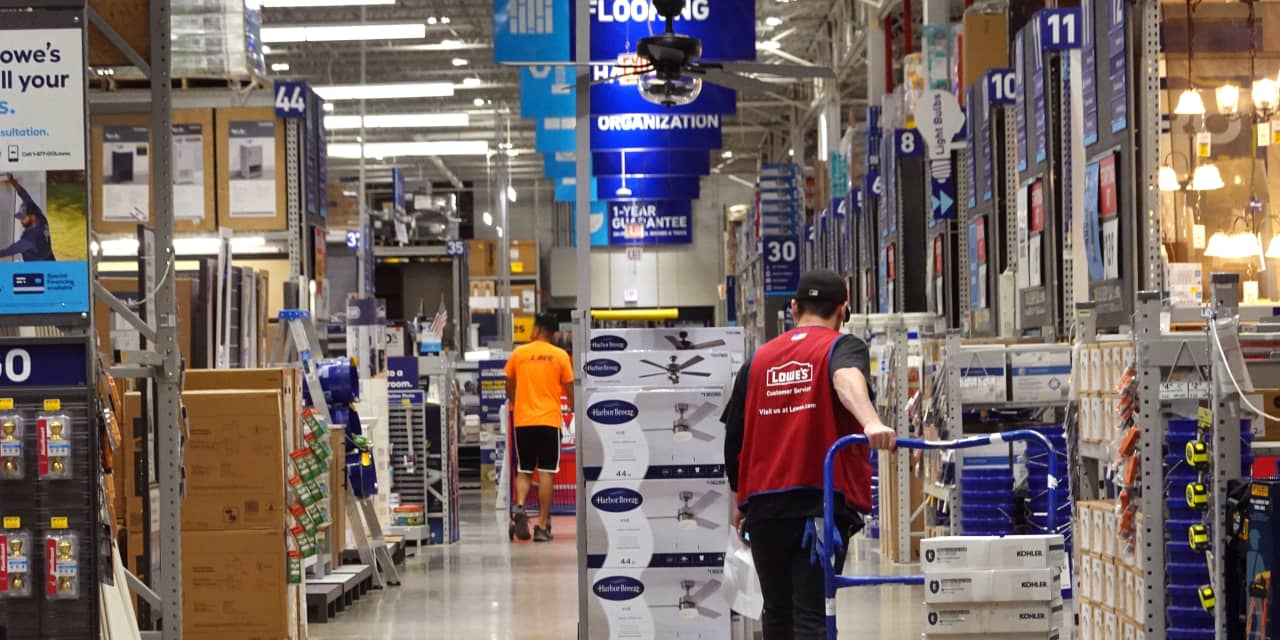Tuesday’s slew of earnings reports rocked the retail industry, sending some stocks tumbling double digits and others soaring by just as much.
What’s behind the divergence?
Certainly, the macroeconomic environment—and how companies are navigating through it—has something to do with it. Many retailers whose stocks were lower Tuesday—including
Lowe’s
(ticker: LOW),
Kohl’s
(KSS), and
Best Buy
(BBY)—saw sales fall over the third quarter as consumers reined in their discretionary spending.
Kohl’s
closed 9% lower, Lowe’s was down 3%, and
Best Buy
was off 0.7%.
“Our results were driven by a greater than expected pullback in DIY discretionary spending, especially in bigger ticket categories,” said Lowe’s CEO Marvin Ellison in a call with investors. “While we’ve seen a more cautious consumer for some time now, this quarter we saw some of these consumers increasingly prioritizing experiences over goods spending on travel and entertainment.”
Stock in off-price retailer
Burlington Stores
(BURL), in turn, closed 21% higher, its largest one-day percent increase on record, after the company said Tuesday that its revenue jumped 12% from the year-ago quarter—another sign that Americans are looking for value amid a slowing economy. Markets are also rallying behind the company’s improved margins—suggesting investors are still willing to reward strong execution.
“Our expectation coming into this year was that the economy would slow down and that that would cause shoppers to become more value conscious; and therefore, we’ve seen more trade down traffic in our stores,” said Michael O’Sullivan, CEO of Burlington on Tuesday.
The macro factor, however, doesn’t fully explain Burlington’s rally—the earnings beat was narrow, and the company didn’t raise guidance. It also doesn’t explain why shares of
American Eagle Outfitters
(AEO) tanked 16% Tuesday, even though the company beat expectations—nor why the market reaction to
Abercrombie & Fitch’s
(ANF) stellar quarter was relatively muted, with the stock closing 2% higher.
Part of it may boil down to expectations—some companies had to clear a higher bar than others heading into the report. Abercrombie has been cranking out beat after beat, which has boosted both the share price and Wall Street’s outlook for the company.
“Stepping back, this was a strong [quarter], and the stock may struggle to move higher given already-high expectations,” wrote Citi analyst Paul Lejuez in a client note, referring to Abercrombie’s report. He said the same about American Eagle’s print. Heading into earnings, Abercrombie’s stock had gained a whopping 215%, while American Eagle was up 41%. The
S&P 500
gained 18% in the same period.
Burlington has seen a couple of choppy quarters, so any improvement in both the top- and bottom-line was well received. Expectations were also low heading into Dick’s Sporting Goods report, so when the company posted what Wells Fargo analyst Will Gaertner calls a “rare beat and raise” for this earnings season, the stock rose. It closed 2% higher Tuesday, but reached intraday highs to gain as much as 12%, according to Dow Jones Market Data.
It isn’t the first time this earnings season that we see expectations driving share prices. Last week, Target and
Walmart’s
stocks went in opposite directions following earnings, partly because investors were expecting little from the former, and too much from the latter.
“It would have taken a real blockbuster announcement to move [Walmart stock] up because that was already priced,” Don Nesbitt, portfolio manager at F/m Investments, told Barron’s last week.
Write to Sabrina Escobar at [email protected]
Read the full article here





